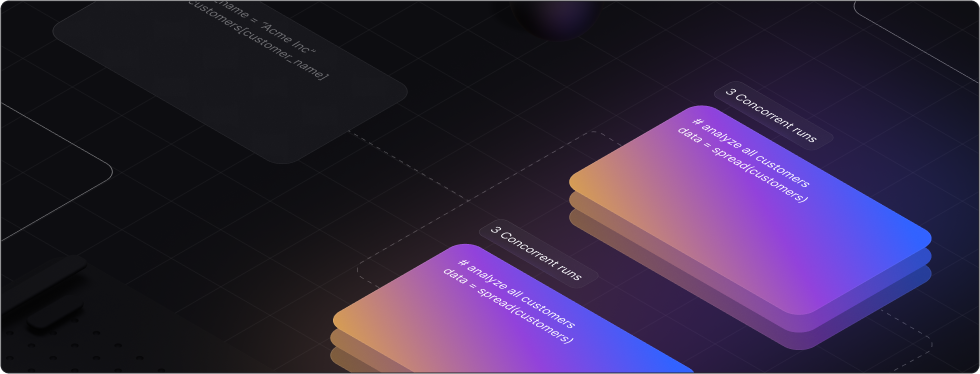
How Zerve’s Fleet Simplifies Distributed Computing and Parallelism
LLMs can do incredible things. Generate text. Summarize documents. Analyze sentiment. But when you need to process thousands of items or run hundreds of variations simultaneously, things get messy fast.
Most workflows start small. A single prompt. A few test cases. A couple of results. Then reality hits. You need to process thousands of records, test hundreds of variations, or train a model on real customer data. That’s when the bottlenecks start piling up.
You can either run everything one step at a time and wait, or start from scratch and re-write everything to handle multi-processing. Maybe spin up extra compute, split the inputs into batches, and hope the coordination doesn't fall apart. Not exactly a scalable, sustainable solution.
Where Scaling Gets Stuck
The moment you move from a few examples to production-scale work, things get complicated.
- Running jobs one by one is painfully slow
- Scaling often means bolting on extra tools just to distribute workloads
- Complex pipelines with multiple languages or frameworks add even more overhead
Teams end up spending more time building workarounds than building solutions.
Parallelism Without the Headaches
The Fleet changes that. Instead of writing complex multiprocessing code or managing batch jobs manually, you add one simple function: spread.
- Zerve spins up compute automatically and runs jobs in parallel
- You can test your logic with a single input before scaling up
- Results are automatically aggregated and then continue in the workflow
You don’t need to rewrite your logic. You don’t need to set up extra infrastructure. Your work runs at scale without extra effort.
Everything stays inside Zerve. Compute happens in your environment, whether in the cloud or on-prem. You keep full control of your data and infrastructure.
Why It Matters
When you're running batch prompts, evaluating model outputs, or iterating on GenAI workflows, this is the difference between waiting hours and getting results on the spot.
With the Fleet, you’re not stuck waiting on loops or fighting with multiprocessing. You or the Zerve Agent can focus on improving your models, fine-tuning results, and actually getting work done without worrying if your setup can handle it.
The Bottom Line
Scaling GenAI workloads shouldn’t mean rebuilding them from scratch. The Fleet makes it possible to keep your existing workflows, your language of choice, and your infrastructure.
It just runs faster. One line of code. Full speed. No tradeoffs.
Don’t believe us? See for yourself.
Related Resources
.png?width=315&height=83&name=Logotype-3%20(1).png)

